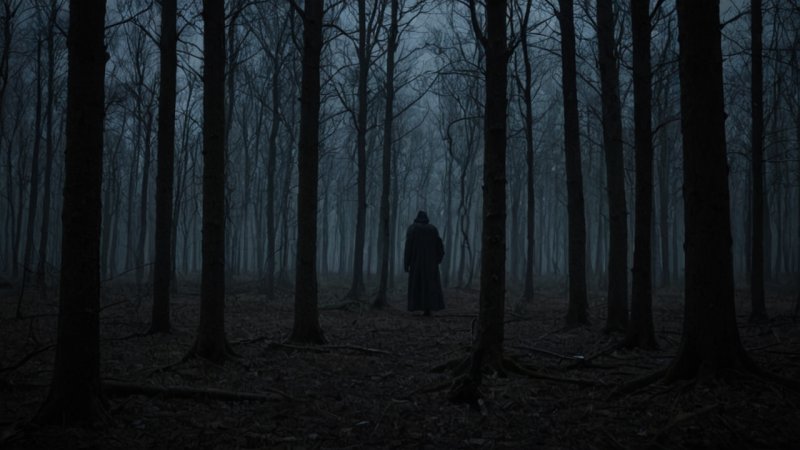In the realm of mystery and thriller literature, the setting is not merely a backdrop; it is a vital character that shapes the narrative's atmosphere and influences the reader's experience. The way a story unfolds often hinges on its environment, whether it be the shadowy alleys of a crime-ridden city or the isolated confines of a remote cabin. As readers, we are drawn into the world that the author crafts, feeling the tension in the air, the chill of the night, or the oppressive weight of a dimly lit room. This article delves into the profound impact of setting on atmosphere in thrillers, exploring how authors use geography, time, and sensory details to weave intricate webs of suspense and intrigue.
The Role of Geography in Thrillers
Geography plays a crucial role in establishing the mood and tone of a thriller. The location can evoke feelings of fear, claustrophobia, or isolation. For example, in Agatha Christie’s classic novel Murder on the Orient Express, the luxurious yet confined setting of a train creates a unique tension. The closed quarters force interactions between characters, heightening suspicions and paranoia. In contrast, a sprawling cityscape, like in Michael Connelly's Harry Bosch series, allows for a more complex interplay of characters and plot threads, with urban landscapes often serving as labyrinthine settings that mirror the intricate plots.
Time Period and Its Impact
The time period in which a thriller is set can also significantly affect its atmosphere. Historical settings often bring an additional layer of tension due to the socio-political climates of the time. For instance, the post-World War II era depicted in John le Carré’s The Spy Who Came in from the Cold encapsulates a sense of moral ambiguity and betrayal, enhancing the suspense. Conversely, contemporary settings might leverage modern technology and social dynamics to create a different type of tension, as seen in Gillian Flynn’s Gone Girl, where the digital age plays a pivotal role in the unfolding drama.
Sensory Details that Enhance Atmosphere
Authors often utilize rich sensory details to bring their settings to life, immersing readers in the environment. The use of vivid imagery can evoke the sights, sounds, and even smells of a location, enhancing the overall atmosphere. In Tana French’s In the Woods, the lush, oppressive Irish forest is described in such detail that readers can almost feel the damp earth beneath their feet and hear the rustling leaves. This sensory immersion not only sets the stage for the mystery but also deepens the emotional connection to the characters and their struggles.
The Emotional Weight of Isolation
Isolation is a prevalent theme in many thrillers, and the settings chosen often reflect this. Whether it’s a cabin in the woods, a deserted island, or a small town with deep secrets, these isolated settings amplify feelings of tension and fear. In Stephen King’s The Shining, the Overlook Hotel becomes a character in its own right, its eerie emptiness and haunting history contributing to the psychological unraveling of the characters. The isolation allows the narrative to explore themes of madness, dependency, and fear, all heightened by the oppressive atmosphere of the setting.
Symbolism and Setting
Many authors use settings symbolically to reflect the internal struggles of their characters or to foreshadow events. A decaying building might symbolize a character's deteriorating mental state, while a stormy night could indicate impending chaos. In the works of Patricia Highsmith, settings often serve as metaphors for the moral complexities faced by her characters. In Strangers on a Train, the contrasting settings of the lush, manicured gardens and the stark, sterile environments play into the themes of duality and deception, enhancing the psychological tension of the plot.
Creating a Sense of Place
A well-crafted setting can transport readers, making them feel as though they are a part of the story. The sense of place can evoke nostalgia, fear, or curiosity, depending on how it is portrayed. In contemporary thrillers, authors often ground their settings in real locations, adding authenticity to the narrative. This technique can make the stakes feel higher, as readers can relate to the places being described. For example, in The Girl with the Dragon Tattoo by Stieg Larsson, the cold, harsh landscapes of Sweden reflect the bleakness of the story and its characters' lives.
Conclusion
In conclusion, the significance of setting in thrillers cannot be overstated. It is an essential element that contributes to the atmosphere, enhances the narrative, and shapes the reader's emotional journey. Through geography, time period, sensory details, and symbolism, authors create immersive worlds that draw readers into the heart of the mystery. As we explore these thrilling landscapes, we become entwined in the suspense, feeling every twist and turn as if we are living the story ourselves. The next time you dive into a thriller, take a moment to appreciate the setting—it is often where the true magic of the story unfolds.






